On the Clinics and Bars of Weimar Berlin0
The first half of an Essay about Transgender Women and Surgery
by Leah Tigers
A trans woman seeking to remove her penis after the Great War had for the first time hope of the clinic. Hailed even by contemporaries as “the first and only of its kind,”1 the private Institute for Sexual Science opened on July 6, 1919 just off the corner of Beethoven Street and In den Zelten, Berlin, Germany. Surgical experiments on genitalia – and they were, their surgeons conceded, absolutely experiments2 – began almost immediately.
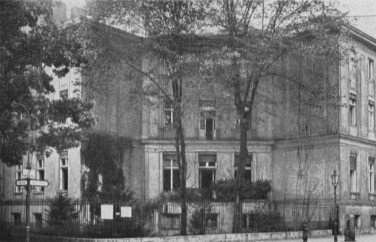
Within a year a man (so-called), young, nervous, and ex-military, appeared before the Institute with a loaded revolver in one pocket, an overdose of morphine in the other, and elaborate plans to splash her brains on the clinic wall after doctors declined her medical castration. (Suicide was the greatest interwar German art,5 whose perfection measured in flamboyance; the soul of the new German democracy, raked with war debt and its imputation of guilt, played out in miniature by the will to life of its every civilian.) To her surprise the doctors accepted, foiling her glamorous death. On June 21, 1920, under referral by Dr. Magnus Hirschfeld, after extended psychoanalysis from Dr. Arthur Kronfeld, by the hand of Dr. Richard Mühsam – Jews, all three6 – she received a bilateral orchiectomy.
Thus was written on a body the Institute’s marvelous reversal of biological commonplace: sterilization as a continuation of life. Magnus had written, “Many authors consider the prerequisite of a healthy ‘natural physiological’ love to be that it ‘serves the procreation of the species’… [but] love is a goal in itself. Above all it serves self-preservation, since it binds a person to life.” He published such sentiments many, many times;7 it cannot be overstated how much his gay fusion of clinical practice and sexual liberation was tethered by suicide prevention, nor how totally German suicide culture had symptomatized itself for diagnosis of this mortifying democratic illness Europe called “the Weimar Republic.”8
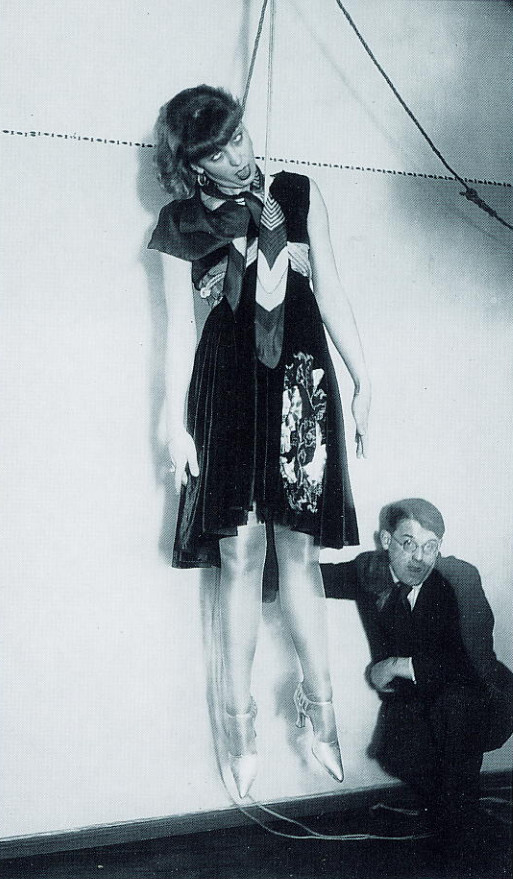
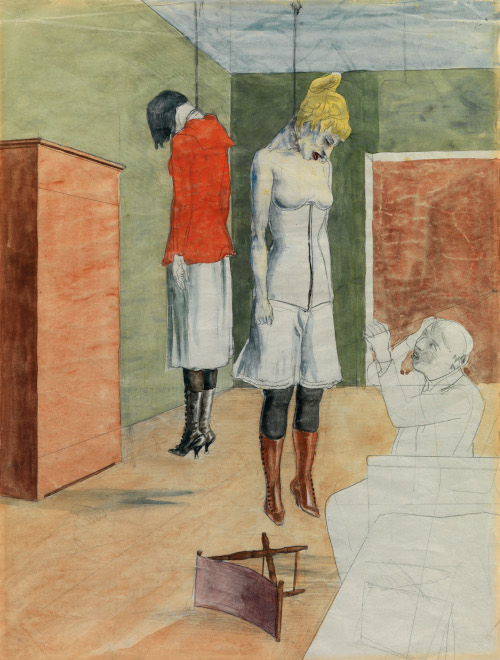
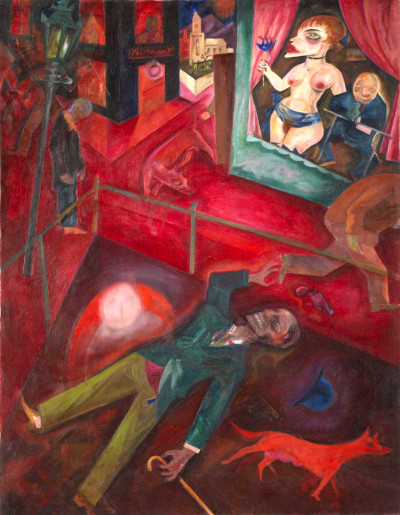
Despite all this motive, Dick Mühsam reported, “I could not bring myself to amputate the penis.” Having refused a different patient orchiectomy the prior year, Richard was often a surgeon who could not bring himself to.9 Arthur, for his part, ran a mean conversion therapy spiced with the new Freudian science, which director Hirschfeld despised; one employee recalled Magnus’s “absolutely personal animosity toward the Professor Kr[onfeld]… He instinctively rejected everything from Kr.’s sphere of activity.”10 Even Magnus, our champion against psychic conversion, held his early doubts:
“At first I had strongly opposed these [surgical] methods, which I considered disastrous to wellbeing and otherwise deemed unnecessary… but the more I studied these individuals, I realized some were ready to commit suicide in the event their wish for sexual transformation went unsatisfied. So I told myself, I must surrender my hesitation.”11
So this once, in compromise, the patient’s phallus was merely “sheathed,” stripped to its columns of raw tissue and guided skinlessly through the body down a surgical canal at the perineum.12 Strange and painful internal erections followed. Little wonder this “transvestite masturbator,” as her surgeon named her, swore off transvestism and requested detransitional surgery four months later. Yet the Institute’s mission had executed nonetheless: the patient was now reporting in ravenous for life, well-adjusted to castration, a Sexualneurotiker no more! She, or he, had learned to regularly leave the house, then leave the whole damned country, writing from abroad to Dick their only words: “Health’s good. I am at peace with myself, absolutely.”
It would fall to other women of the Institute, dismissively labeled “Hirschfeld’s transvestites,” to receive a vagina, the enduring surgical invention of early trans clinical care. They decided this was possible after seeing the moving pictures. Dora Richter, at least, made appointment with Magnus already familiar with The Steinach Film, an hour-long advertisement from 1922 for a new surgical procedure so deliriously popular it became common all through that decade, on encountering a spry German man, to gossip of the monkey testicle presumed implanted in his abdomen: “He’s been steinached!”13 This procedure, the film announced, was a “solution” to “the ancient dream of eternal youth.” Such propaganda of rejuvenation, of rebirth and virilization, answered fears of impotent and demilitarized German men.
In opposition, the film’s end is filled with languorous gender dysphorics, bluestockings, effeminates, and hermaphrodites, depressed by their lot in life. Using the presupposed neutrality of scientific speech in that time, these were images of sexual degeneration. Each, Dora Richter read, was credited to Dr. Hirschfeld’s Institute, where such miserables collected.
Dora was a fellow miserable. Upon arriving at the Institute, Magnus remembered, “He [sic] declared he was ready to end his life should we not yield to his desire for ‘feminization.’” To him she was “a simple countryman [sic], who came to me clothed in women’s dress.”15 Such she wore always in the underdeveloped Bohemian mining town of her birth; when drafted with male peasants for the Great War, she appeared before recruitment in her ever-present country frock, for which she was summarily dismissed. When war’s death-thirst grew harsher, she was again drafted despite her dress, but again dismissed, for she kept fainting through basic cadet exercises. That war was over now; the time of the new woman – Germans called it Girlkultur16 – was at hand.
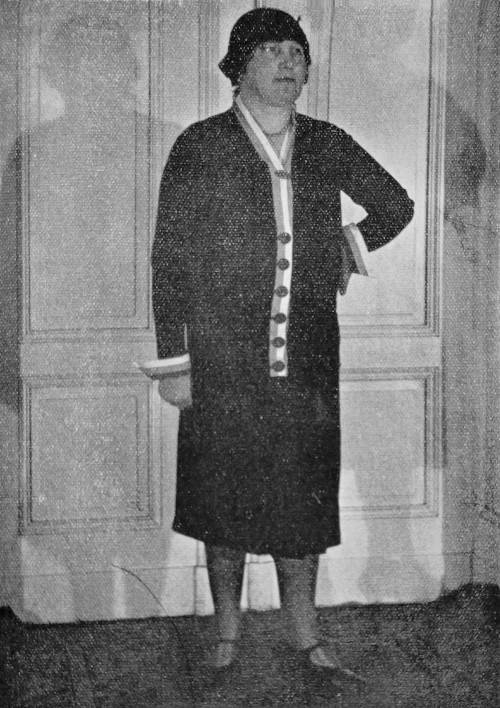
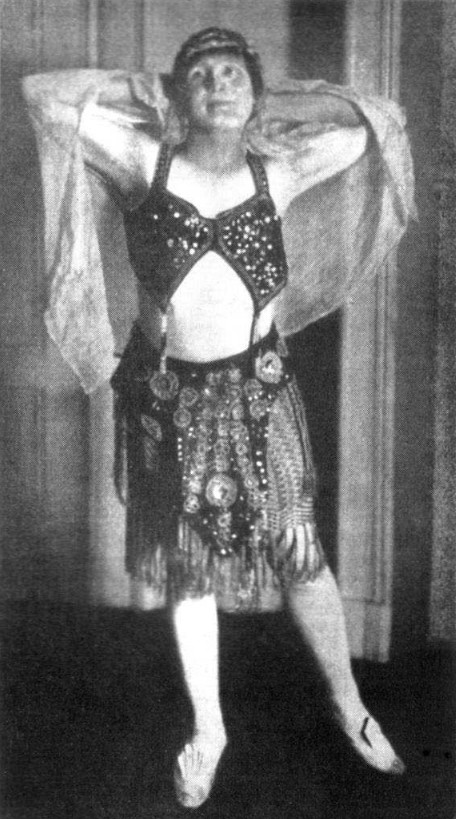
In not just the army but even Berlin, “Only a few companies hire transvestite staff,” Dora’s future surgeon17 wrote, “so we employed them as best we could in our own institute.” Castration, a technically trivial operation with centuries of transgender history, now came to trans women with novel opportunity for formal institutional commitments. For eight years after her castration in 1923, Dora agreed to work quietly as cookmaid in both her own gender clinic and the grand Kempinski restaurant just west through the park, by which she proved herself, after too long, a trusted test subject for something more. In this time she witnessed a complete transformation of the Institute’s relation to sexual dissidence, by which her transgender vaginoplasty,18 the first, became mentally possible.
In 1924 the Institute nonprofitized under stewardship of the Weimar government, and Magnus signed on as its permanent director. The task of his clinic became a thoroughly social one by these means of state. Magnus’s proudest achievements of his Institute were not even transsexual in nature: rather, they were the Questionnaire Evenings he held open to public weekly in Ernst Haeckel Hall, attended across the years by some ten thousand persons, where he compounded sexual data ranging from the frankly mundane (Question 35: “Do you masturbate?”) to the hilariously so (Question 127: “Are you in love with your own body? Do you like to perform dance moves in front of the mirror?”).19 His second pride was the Marriage Consultation Department, where purportedly ordinary heterosexuals would come for advice on marriage, childbearing, love, sex, and with unusual liberality, abortion. Planned Parenthood founder Margaret Sanger visited in 1928 with praise for such services, recalling on the wall transition timelines of “homosexuals [sic] – men decked out as women in huge hats, earrings, and feminine make-up… [and] photographs of the same individuals after they had been brought back to normality.”20 In this confused assessment she reversed time. Unknown to her, here the care of transsexuals had been absorbed into the care of the entire sexual body politic, so that the “transsexual” too became a thoroughly social animal.
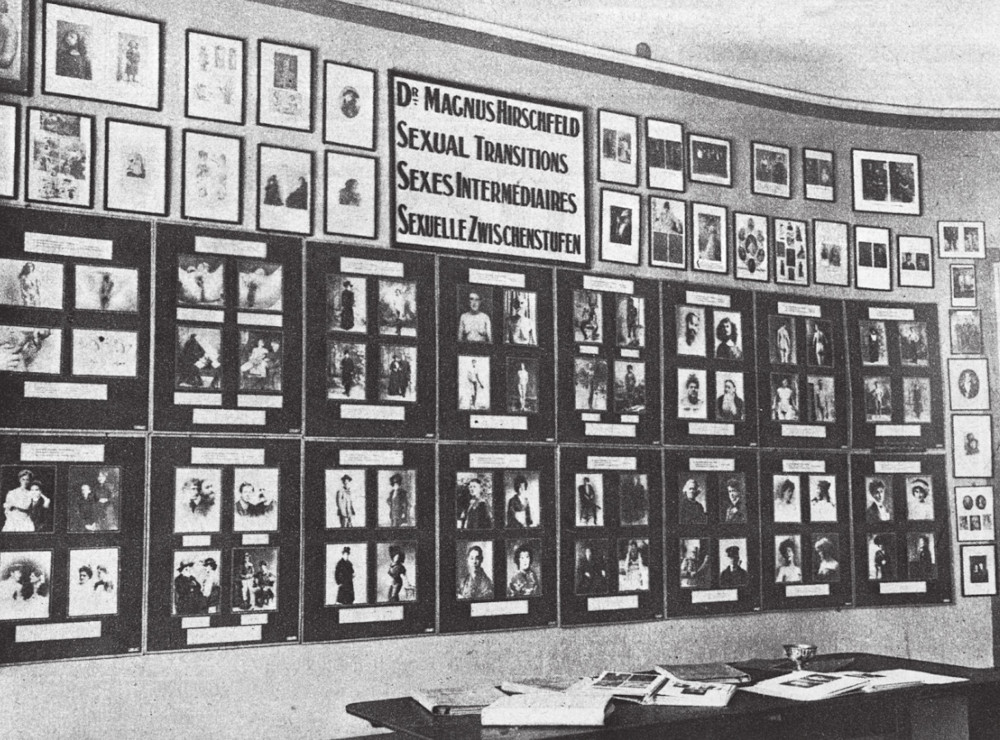
The good doctor Arthur Kronfeld departed the Institute in 1926, upon which all its researches into conversion therapies suspiciously ceased. Replacing them was Hirschfeld’s refined concept of “milieu therapy,” a broadly unscientific principle of queer kindness which “seeks to bring the patient into an environment that corresponds to what they are.”21 Soon enough Felix Abraham, the Institute’s new milieu therapist, was writing down prescriptions to butch bars22 for his transmasculine patients. He knew all the addresses: the Ariane on Keith Street, the Mali and Igel just west the Nolli; for trans women there was the legendary Mikado off Friedrich, raging strong since the imperial era. Originally a generic gay bar, one day pub regular Sir Willibald von Sadler-Grün had appeared in wig and crinoline done to the nines like Marie Antoinette, declared herself a Baroness, and begun sopranoing camp love songs at the piano.23 By 1920 the queens24 had taken over. Costume balls25 were routine and (mostly) police-permitted. One journalist recalled asking a dancer there if she was a man or a woman, to which she responded, “Neither! I am their master!”26
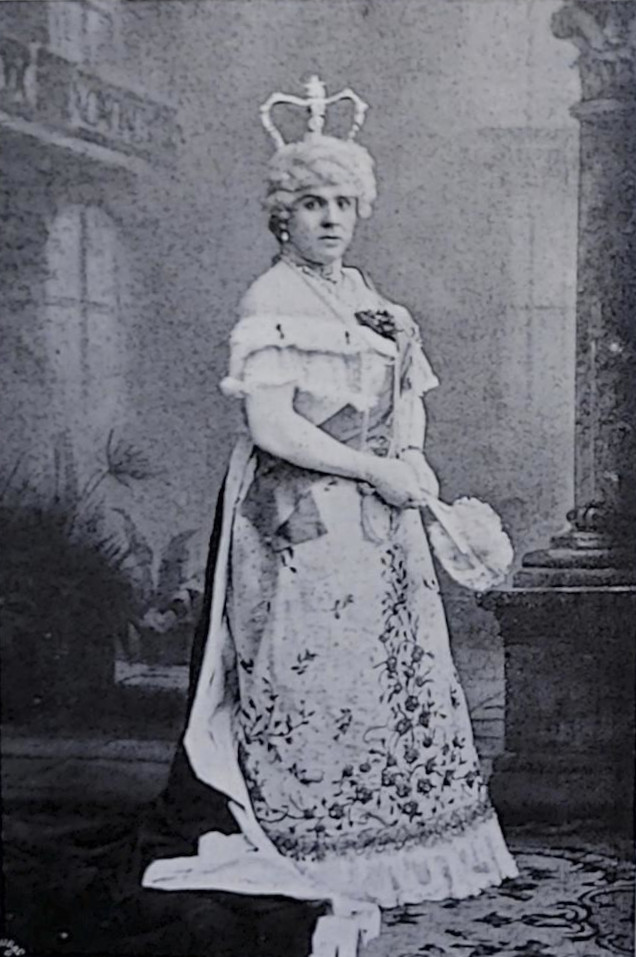
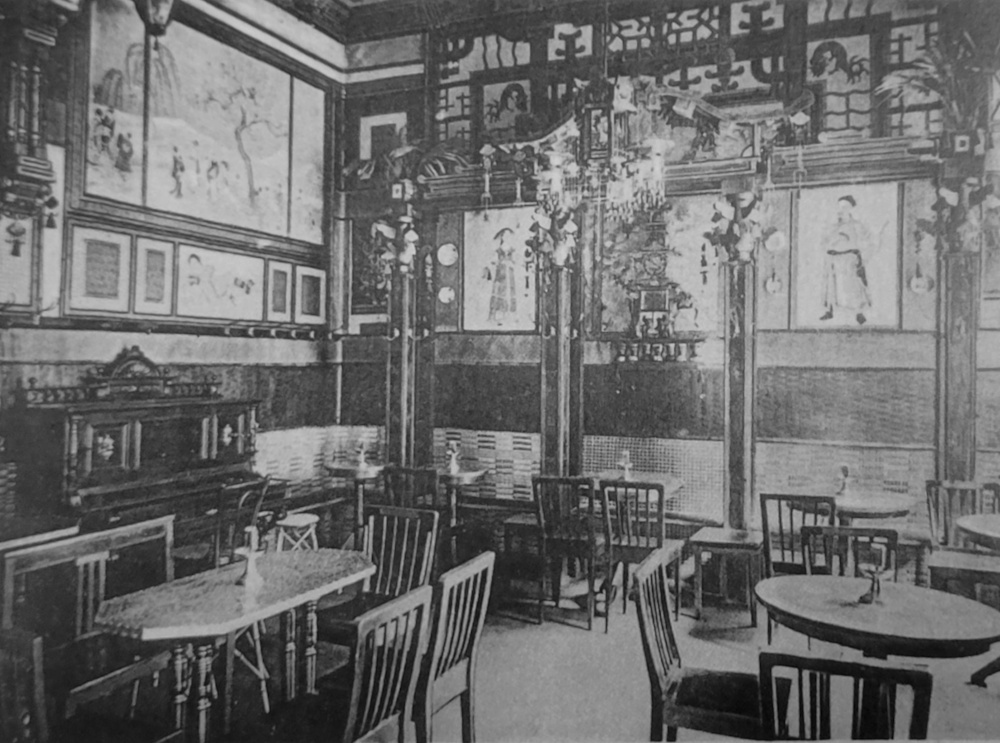
Contact between Institute and bar was deeper than prescription. A few blocks further east, a small gay dive – nominally small, anyway, named The Petite Lion – was run by one of Magnus’s earliest trans patients. In 1909, back before all this business with the Institute and whatever republic it was founded under, the doctor had visited in hospital what everyone had first assumed to be an ordinary young woman, who had sliced down to the artery of her left wrist to bleed out on the floor of a local Berlin hotel. “These last few days,” her suicide letter asserted, during which she’d been passing as, yes, an ordinary young woman while on the run from her parents, “[I] actually felt like a human.”27 She did not die then, and, moving into a niche of her bar housing the small photo gallery, patrons could see who she had become those ten, twenty years since: “Voo Doo, the once-famous Indian snake-dancer,” performing abroad as the mythic androgynes and femme fatales of historical literature: Salomé, Salammbô,28 and Elagabalus. In 1927 she would retire the vaudeville act and, with her boyfriend, open up this “Meeting Place for Transvestites,” as it was advertised.
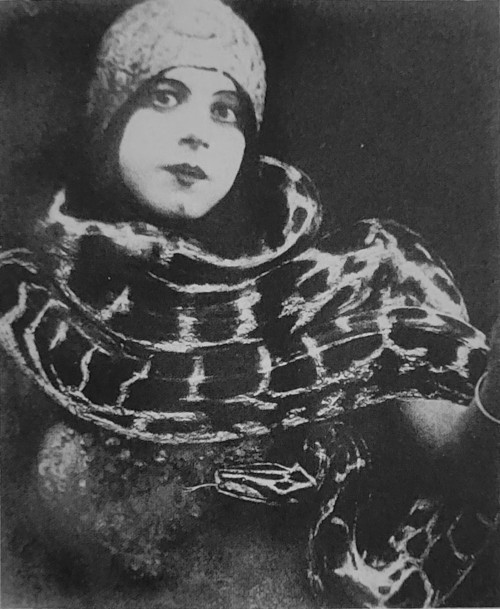
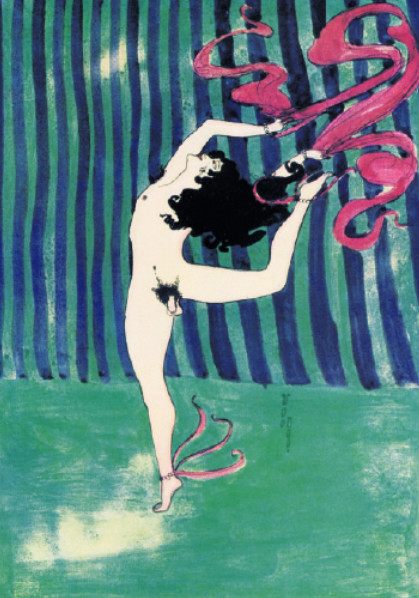
Moving out in Tiergarten west, partyhoppers uncovered a more sapphic scene. On Gleditsch Street there was your casual dyke joint like The Princess Cafe, bartended by Liselotte, “blonde… tall, slender, narrow in the hips,” as one lesbian patron recorded.29 “She wears over her short pastel dress a small white apron, her curly bob30 adorned with the most becoming ruche… Only when you approach and hear her deep timbre do you recognize Liselotte is male [sic].” Often Liz was serving “Darling Irma” who “sits and chats with the few men there… strutting about always in a sailor suit which fits her [sic] admirably. Irma makes it only with men, but despises herself in clothes of her sex.”
Rising above all these was gay Berlin’s crown jewel, the Eldorado, carrying tremendous mystique because, like its queer night crowd, it was formless. Magnus had estimated in 1922 there were between 90 and 100 gay bars in Berlin, that whenever “one bar closes, another opens”;31 true to word there were at least four Eldorados, with mythology dating back before the war. The center of this gay mythos was on Luther Street, so successful owners billed it as “The Original” (it was not) and opened an adjoining club on Motz three blocks up, serving as slick filter against tourists.
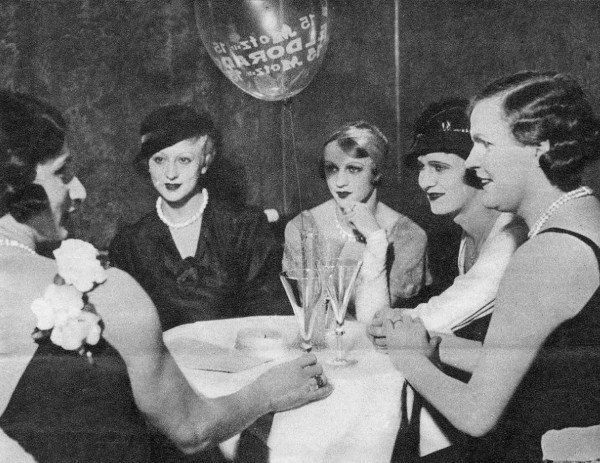
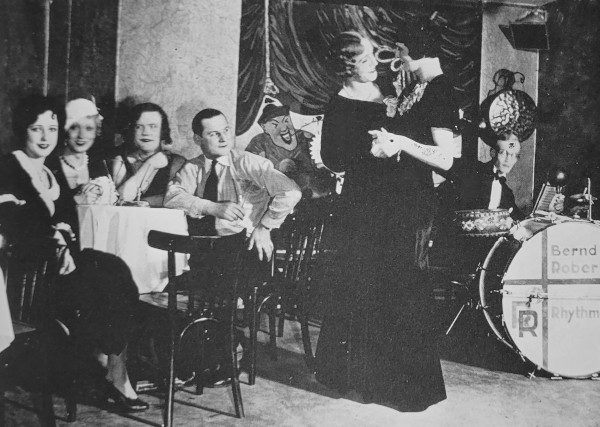
Lure of the androgyne gave Eldorado’s mystique its ground – trans-excluding bars were never so popular nor international in spirit – and there are countless scandalized reports, mostly French, of Eldorado’s “caste of inverts,” its “fake ladies” and “sexless waiters.” To name one such waitress may suffice: Ossi Gades worked her way up to dinner escort32 in 1928, until she swung a gay boyfriend33 and split to go kai-kai; the two were often seen out together in dresses. Magnus himself could be seen sat at the Eldorado some nights, snapping pictures for his archives or just out for a drink. Yes, his Institute’s therapy was not long just a prescription for this gay milieu; the Institute was becoming of the milieu itself.
Soon those who made nights out at the Eldorado could be found malingering in the Institute’s very own halls. Weimar’s wunderkind intellectual Walter Benjamin, for instance, having spent more than one evening at the nightclub with his wife, dinner, and a smoke, rented a room at the Institute for some months in the mid ‘20s; he later wrote capsule reviews on Hirschfeld’s work, which he discussed with friends as they got high on weed.34 Other visitors were, like Berlin itself, international. Young Englishman Christopher Isherwood, writing in confrontation with his own burgeoning homosexuality, lived in an Institute room throughout his Berlin years starting in 1929, where he became great friends with its archivist and museum director, Karl Giese. So incredible was the gender clinic’s capacity to suck up its surrounding gay milieu that Christopher wrote, “Everyone else who entered the domain of the Institute… had automatically become a museum specimen, subject to Hirschfeld’s diagnosis and classification.”35 Over lunches Karl would slyly confess to all visitors into the act that he and Magnus were lovers.36 Strange place, this Institute: even its doctors had the illness! Then the Institute’s own costume balls began, just like at the Mikado, as if the clinic had been a gay bar, or, no, the gay bar a clinic.
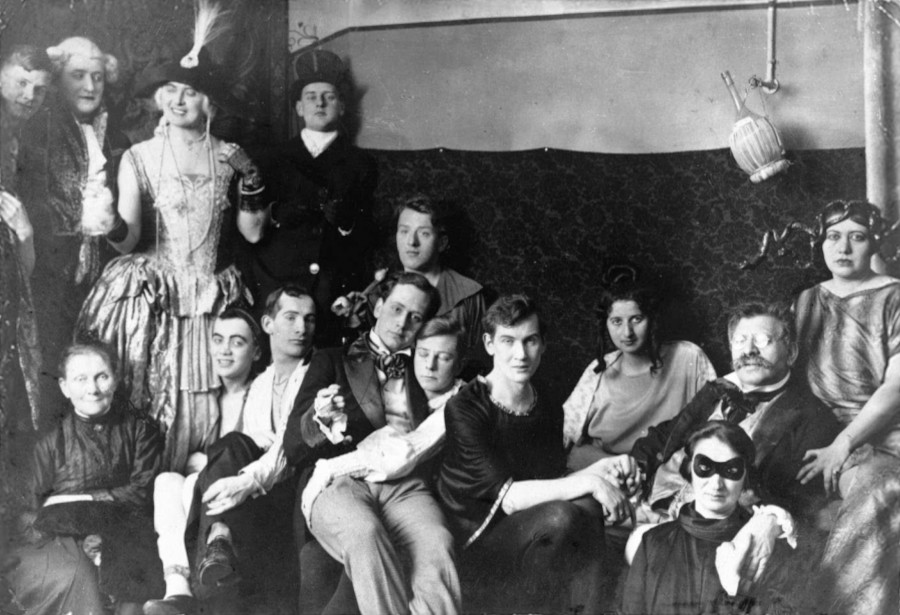
In sum, Magnus Hirschfeld’s Institute for Sexual Science became a citified Zauberberg, a “Magic Mountain” serving as title of Weimar author Thomas Mann’s celebrated 1924 novel. Such metaphor is imprecise; Thomas preferred the Latinate Sanatorium to describe his Swiss alp resort for tuberculosis patients visited by novel protagonist Hans Castorp, while sexologists tended to report suicidal trans women were voluntarily asylumized at a more Germanic Heilanstalt.37 In such insulated company sexual barriers collapsed: at the Sanatorium, Hans overheard patients lovemaking shamelessly; at the Heilanstalt, trans women could freely wear dresses. Sanatorium psychoanalyst Krokowski, a stout, soulful, Soviet-influenced38 man overly familiar with his patients, who lectured in halls on the science of love with the intensity of a failed poet, is doctor Hirschfeld exactly. (Thomas Mann, a prudish bisexual, knew Magnus well, having tentatively signed his failed 1897 petition to repeal the German anti-sodomy law; the “queenliness” of both men was hotly debated in gay periodicals of the day.39) Hans, visiting the Swiss sanatorium for an apparently healthy three-week jaunt with his cousin, finds himself in an odd ill way staying for seven years. The French writer Louis-Charles Royer, visiting the Institute in 1930 in an also apparently healthy way, found himself confusedly requesting his own hospitalization. “How did this preposterous idea come to me?” he reflects.
“I am certainly no scientist, nor even a criminal. On what grounds might I be admitted? I deserve neither this excess of honor, nor this indignity. That leaves sickness, but the inclination I feel for the opposite sex seems to me too natural to be a medical matter. All the same, doctor Magnus must have placed me among these three categories, because he said: yes.”40
It was not seven but eight years which separated Ms. Dora Richter’s castration from her transgender vaginoplasty, the first. There are pictures of her at the Institute all the while, in her maid’s apron, serving tea to more educated employees. When she heard an uppity graduate student in residency at the Institute proclaim, “the fulfillment of this wish [for castration] would not make him a woman by a long shot,” she flustered and fired back, “But at least I won’t be a man anymore!”41
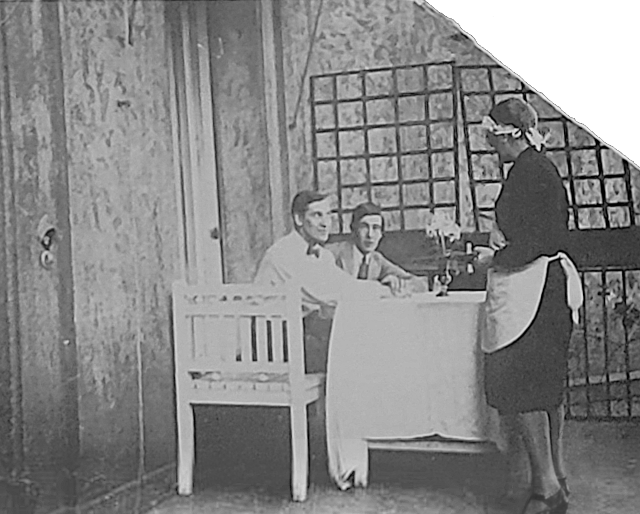
Her penis was at last amputated by the clinic’s gynecologist, Ludwig Levy-Lenz, on March 31, 1931. (Preservation of the glans for construction of a clitoris would not occur until the 1970s.42) Two months later affiliated doctor Erwin Gohrbandt began the work. Milieu therapist Felix Abraham served as assistant. “A catheter is inserted into the penis stump to avoid damages,” he recorded. “After this a cut is made in a vertical direction into the muscles of the perineal area and the vagina is worked deep until the peritoneum is reached… it will be lined with grafts taken from the upper leg.”43 Completion of the labia, a fourth surgery, may have never occurred. “Through this operation,” Dora said, “I have obtained happiness in my inner life. My castration has fulfilled all the childhood dreams of my heart.”44
Countless remnants of trans people Dora may have encountered over her years at the Institute are jotted offhand: a “lieutenant in the navy of a foreign power” who took military leave there “for the sole purpose of dressing as a woman”; “a young man [sic] who,” at visitor request like some trained animal of a zoological park, “opened his shirt with a modest smile to display two perfectly formed female breasts”; a trans teen rejected for mastectomy because surgeons “did not believe the girl’s [sic] psychological development complete” who “to force the amputation, inflicted severe and deep cuts on herself with a razor.”45 None of them have names, not even the mastectomy patient. It was rather those “extreme transvestites,” as Magnus named them – sporadically he did use the word “transsexual”46 – whose existence, by pursuit of genital transition, was most severely implicated with his gender clinic, and thus lain out on its historical record. By these means we acquire the names Charlotte Charlaque and Toni Ebel.
About 1923 Charlotte, who had gone about town in women’s clothing since adolescence, was clocked and harassed by a man off a stop at the Berlin U-Bahn; a friend47 advised she seek the protection of Magnus Hirschfeld. Within a year she was working reception at his Institute. Unlike Dora, Charlotte’s family was well-to-do, traveling between Germany and the U.S.; fluent in English, she served as Magnus’s translator at several major conferences. This was a bit above maidly drudgery, an easier social climb. Educated, urban, amerikanisch, young Charlotte could have performed a fine rendition of the new German woman, excepting her bizarre transgender qualities. About 1928 she introduced to Magnus another patient case, her older friend Toni Ebel, who took up some of the drudgery employed in chorework near to Charlotte in the clinic. The two likely met through the local arts scene. Both, with Dora, were pursuing vaginoplasty; all were coworkers and fine friends. “We had five maids,” surgeon Ludwig recalled, “all transvestite men [sic]. I shall never forget the sight that befell me one day in the kitchen at closing time:
“There sat the five ‘girls’ knitting and sewing peacefully next to one another, all together singing old folk songs. They were, in any case, the greatest, hardest working, most conscientious housekeepers we ever had.”48
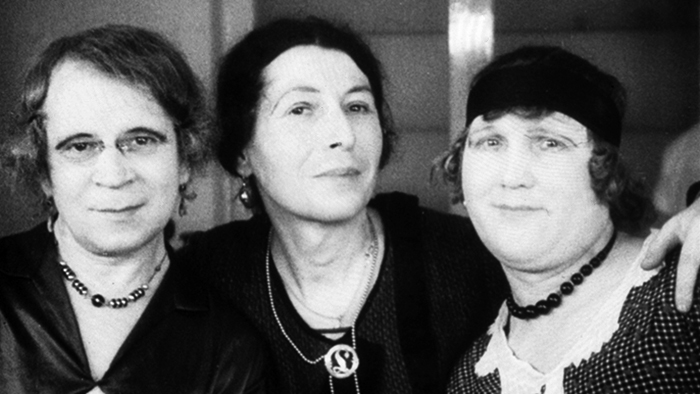
Toni had an enthusiasm for housework, or so her clinicians declared; it was proof of her “female nature.” In fact she wanted to paint; Charlotte preferred acting. From 1929 on they roomed together in a small flat on Nollendorf, embracing what became an increasingly romantic friendship. The two had so much in common, beyond the obvious: there were the merchant fathers, their abuse and abandonment, their religion (Toni was studying for conversion to Charlotte’s Judaism), and then this affinity for the arts, its attendant downward mobility. The couple had no money. To pay for clinical treatments, Toni offered up her own amateurish still-lifes; Charlotte once borrowed fifty Reichsmark off her therapist Felix. The women were, in a word, dedicated Bohemians. They were dedicated to Bohemia not in the sense of Dora Richter, of being literally from that eastly region, but in the sense of acting as the European racial imagination believed Romani migrants it called bohémiens to act: strangely fashioned, freely loving, at once impoverished yet cultured, firmly anti-establishment.
The direct assault upon what Magnus condemned as “bourgeois morality”49 which defines bohemianism was executed by Toni and Charlotte with a sincere class-consciousness. Toni, disabled from the War, was an agitator; she joined the Independent Social Democrats, voted for communists, and knew the great proletarian painter Käthe Kollwitz. Charlotte was a bit more froufrou, but socialist none the less, joining over Toni’s shoddy mandolin strumming with her weak vocal range, which had always held her back from musical theater, for renditions of La Marseillaise and L’Internationale.50 “Art is for the masses,” she said, “not the moneygrubbers.”
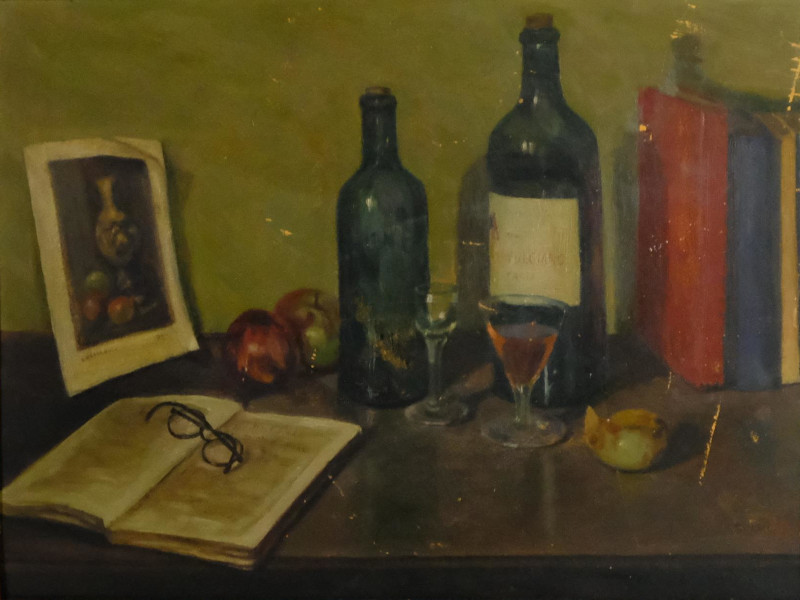
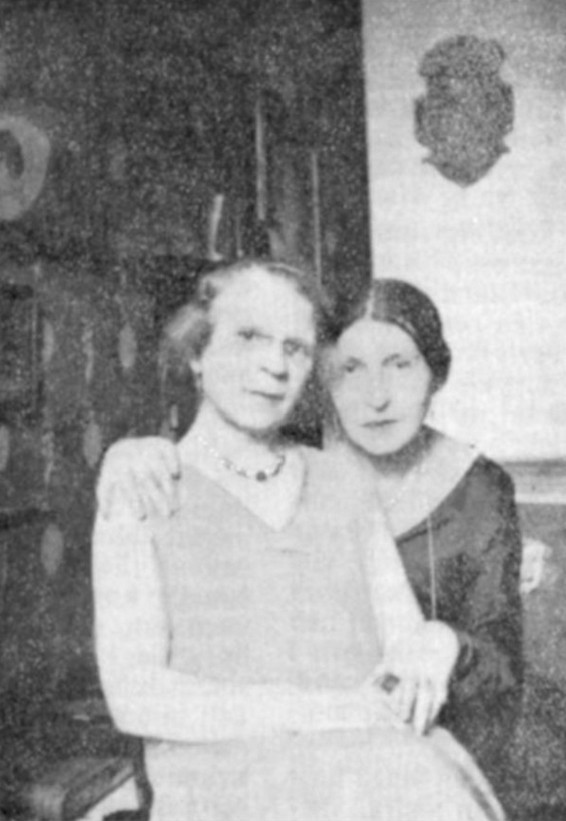
Not every bohemian was so dedicated. The last woman to arrive for vaginoplasty at the Institute, the only who was not German, was Lili Elvenes. She certainly had the spirit, international spirit, traveling often through Italy, France, and her Danish homeland; artistic spirit, painting and marrying a painter; emotional spirit, prone to ostentatious bursts of sentimentality. “Is the bohemian lifestyle on the decline?” a Danish newspaper asked her on return from Paris, years before transition, “Is that due to failing joie de vivre?” “No!” she responded, “quite outraged.” “You should experience a carnival month in Paris! … I remember once I was dressed up as a girl. I must have created an excellent illusion – at least to my astonishment I was vehemently courted by no less a person than an English archbishop! – No, Paris is certainly not lacking in joie de vivre.” But when questioned about French class conflict she repudiated, “There is no such thing as class hatred in the sense it exists elsewhere.”51
More successful, more wealthy, more public than the Institute’s German girls, images of Lili’s body circulated on many news rags abroad. Then, an image of her mind circulated in a 1931 literary biography under the pseudonym Lili Elbe. It is an egocentric text, a defense of Lili and Lili alone. On visit to the Institute she experienced, for the first time, a room full of other trans people: “The manner in which they were conversing disgusted him [sic]; their movements, their voices, the way in which they were attired, produced a feeling of nausea.”52 This was no editorial flourish. “It did not suit the painter to be compared to little Ms. Dora – a maid!” recalled Ellen Bækgaard, a feminist collaborator with Magnus on sexual reform. “He [sic] did not like the Institute and they knew that down there.”53 The feeling was mutual and lifelong, with Charlotte sneering in her recollections, “She was a sissy boy,” then invoking the figure of the gay flâneur, “always roaming about the streets.” “Lili Elbe was very unhappy. So she went off with some little gay boy. Very stupid of her. Her former wife was also very stupid, to publish their story.”54
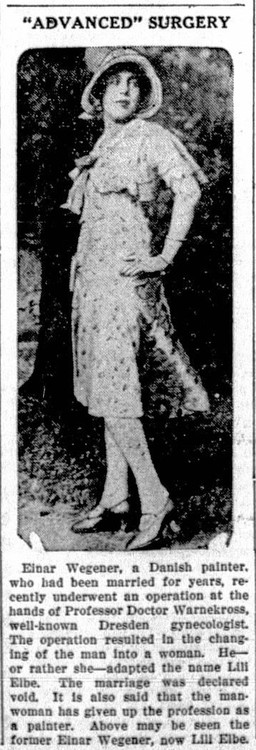
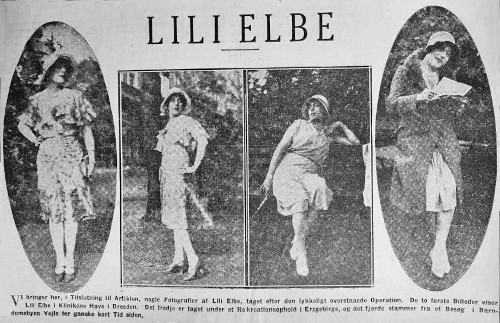
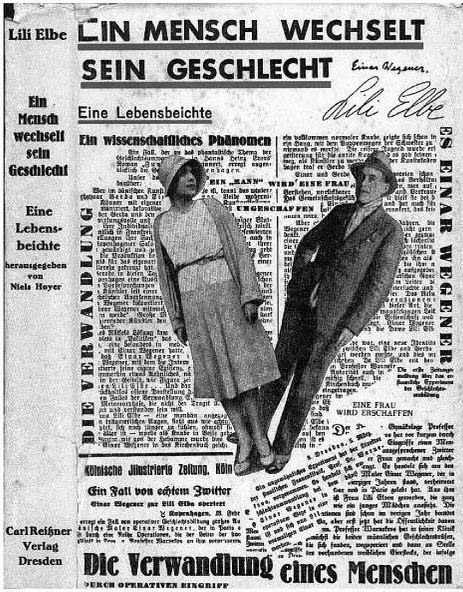
Charlotte and Lili’s vaginoplasties took place at the same hospital around the same time, from Kurt Warnekros at the Women’s Clinic in Dresden, 1931. Charlotte said, “Had Professor Warnekros not operated on me, I would have put an end to all this.”55 Lili, outside of the German culture, phrased her transition oppositely, as a kind of abstract suicide of her male self: “He has voluntarily obliterated himself to make room for someone more entitled to exist than he was, and this person – that is me.”56
This romantic fantasia of Lili Elbe would hardly be worth mention were it not for the fact it has always been most widely disseminated among the middle classes. For, as with Hans Castorp’s seven-year sanatorium in The Magic Mountain, in the clinic there is no avoiding the problem of class.
“Nearly all the friends [at the Institute] who looked in on Karl [Giese] in the afternoon were middle-class queens,” Christopher Isherwood remembered. Berlin had already split vaguely down the Tiergarten into a poor West and poorer East, with its gay scene built very literally, geographically, on this divide. Even Nollendorf Street, where Charlotte and Toni lived in their crummy one-room flat, was “middle-class shabby, not slum shabby.” (Magnus phrased this a different way: “[After the war] there went the pauperization of the middle classes, the petit bourgeoisie, ground to bits between the millstones of industrial capitalism.”57)
Christopher went on, “They [the middle-class queens] had a world of their own which included clubs for dancing and drinking. These clubs were governed by the code of heterosexual middle-class propriety.” It was in these clubs much legal trans organization took place, in a hollow mimesis of Magnus’s own gay rights campaigning. In Weimar Berlin’s only trans magazine The Third Sex, which often cited Magnus, the unknown W. Kramer recalled a “grand transvestite ball” held every first Thursday of the month at gay bar The Magic Flute, where visitors were confronted with an utterly depoliticized transsexuality: “I learned a vast majority of transvestites are married, even have families, and are in their sex life, as they say, completely normal.”58 These were the case studies Magnus selected of trans people for his 1910 book The Transvestites (in which he coined the word), all essentially middle- to upper-class crossdressers who were sexually disgusted by men.59
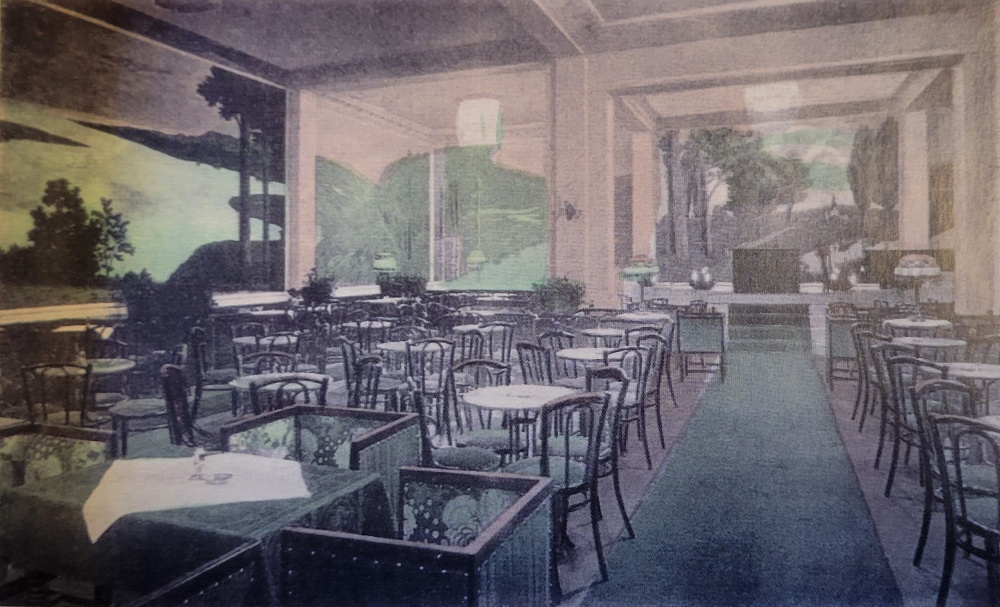
The publisher of The Third Sex, Friedrich Radszuweit, complained haughtily in its penultimate issue that such trans organizing had not worked.
“What interest would the Federation for Human Rights have, to make sacrifices for transvestites, if they themselves stand aside, completely disinterested, apathetic about everything… it’s the same with magazines. As early as 1924 I set up a special transvestite section in the [lesbian] magazine The Girlfriend…”60
Let us see what reason trans women had to take interest in The Girlfriend! This was a magazine, after all, where trans women inquired about surgeries, asking after “fellow sisters who have already taken this step to share their point of view.”61 In 1929, Friedrich published his preferred collaborator, “the transvestite named Käthe Karl,” writing of a “group that cannot be addressed as transvestites, though they don the clothes of the opposite sex.”
“They don’t do it out of inner need, but to do dirty business in clothing. I mean those hustlers who offer themselves up as prostitutes in women’s dress. They are mostly normal males, and morally inferior to their female counterparts. We reject all community with them, because the nature of their behavior is dangerous to other, real transvestites.”62
Yes, there was no clearer instance of the “bourgeois stuffiness”63 painter Gertrude Sandmann judged as pervading The Magic Flute and bars of its kin than their disdain for trans sex workers – a world-shattering oxymoron, when so much of the word “transvestite” was developed to distinguish such maligned dress-wearers from “the prostitute.” The failure of a public to distinguish these two groups was real; in 1926, journalist Paul Markus wrote old gay haunt Mikado was “the meeting point of transvestites, men [sic] in women’s clothes, especially male prostitutes,” as if there were no difference.64 The police, by this time, were more sensitive, if only barely: inside the bar, “gentlemen, who were dancing in vast evening dresses, felt not at all embarrassed,” as “they had permission to circulate the bar in their ridiculous costumes.” Pigs instead waited coolly by the door, arresting any “youth who went outside in women’s clothing” – those whose evening dresses were “low-cut.”65
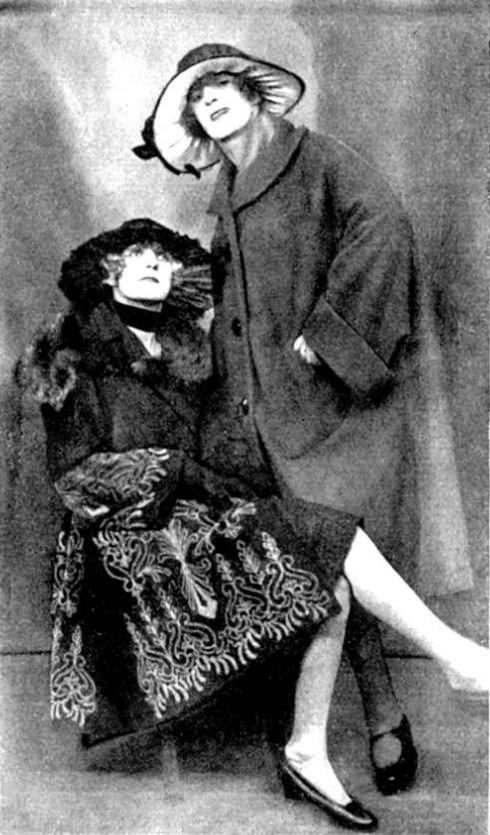
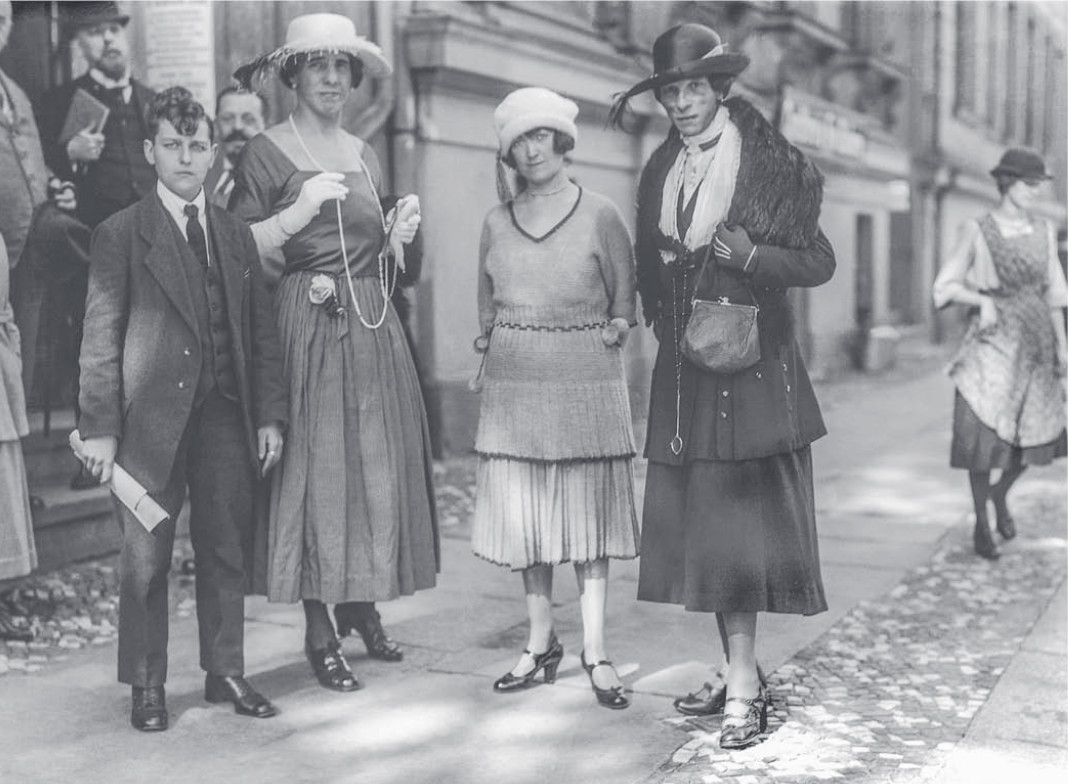
It is rare to find quotes from such women, who lined Friedrich Street with the hustlers; moving into more “female” territory out west was considered overly competitive. They started up by the Kaiser Gallery, outside the anatomical museum, girls and still-boys an average age of about sixteen. Age generally increased moving down the Friedrich, until you encountered the lifers, sex workers thirty and up hanging outside the Mikado. One, Vicky Hardy, was asked by Hirschfeld’s collaborator Pierre Najac what happened if men “noticed.” “They pay for the surprise,” she laughed.
“When men approach me in the street, I don’t deceive them about my sex organs. I do not say that I am a woman. They alone are responsible for their mistake. They can just pay and leave. And that is what they do.”66
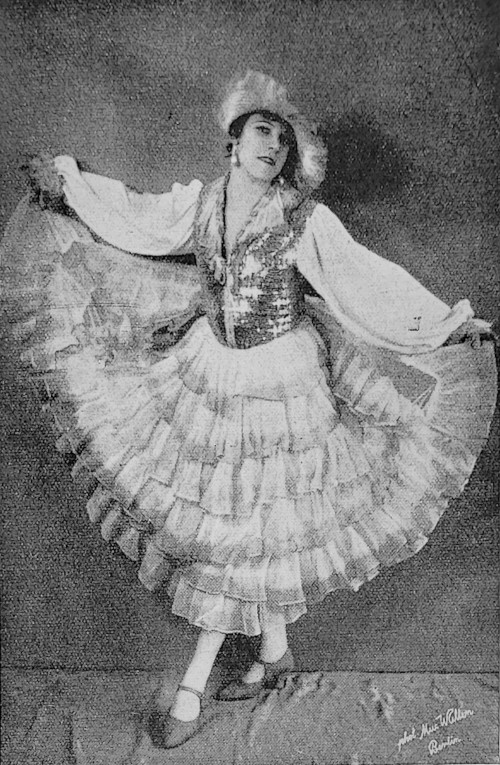
Not all men simply left, however. The Institute museum, overseen by Karl Giese, had on display two vaginal prostheses used by trans sex workers, made from rubber and cow stomach, a homespun convenience in an era before commercial lubricants. These contributions were almost definitely made by Richard Linsert, brought on as the Institute’s coordinator in the early 1920s. Gay, like Magnus, but unlike Magnus an unambiguous communist, Richard’s special fascination was sex work, particularly male sex work. If the Weimar Republic was relatively lax about prostitution, and relatively lax about homosexuality, it was increasingly punitive at their confluence. The German Criminal Code recorded, “Male prostitution must – on this there is universal agreement – be opposed by all means… it is responsible for all the serious harm of same-sex fornication in the first place.”67 The transvestite sex worker, assumed both most deceptive and most visible, emerged as the paradigmatic subject irreconcilable with the sexuality of a nominally liberal Republic.
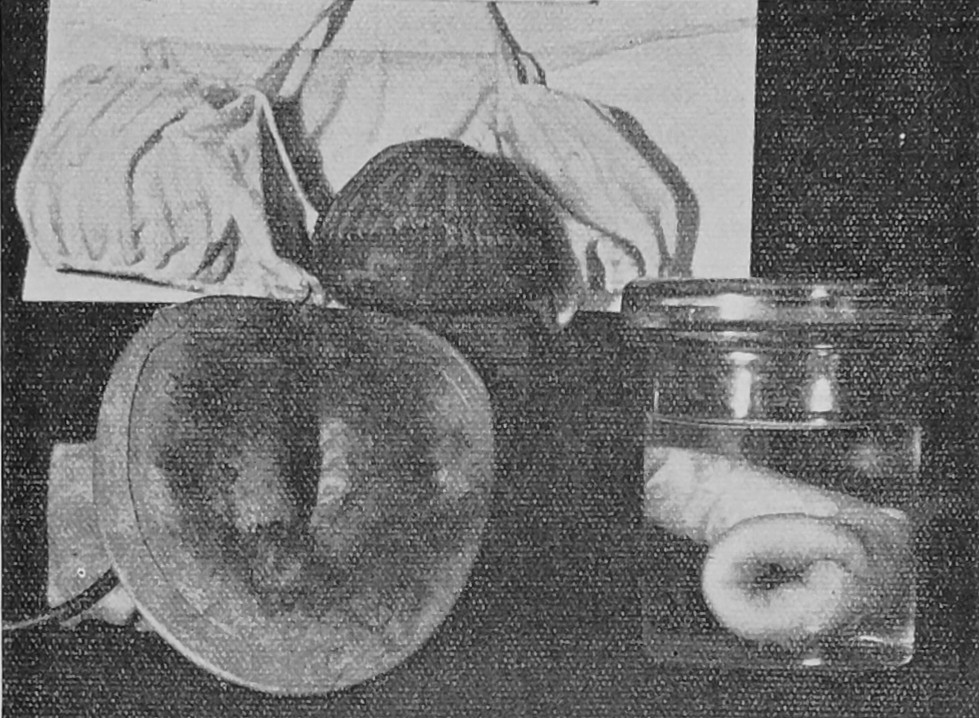
In 1929, at the height of the Institute’s radicalization, Richard wrote an analysis of his sex worker survey Fornication Between Men, one of the Institute’s last publications. Impassioned, unapologetic, barely even scientific, it is worth remembering as the nearest the Institute ever approached an insurrectionary or abolitionist politic. (“The penitentiary improves no man, alleviates no social misery,” Richard wrote.68) Some results were standard; of 100 “male prostitutes” – a mostly legal category for Richard, defined by persecution under anti-sodomy law – 5 were transvestites. More remarkably, of the few sex workers who were “politically organized,” a minority (21%) sided with far-right parties. One sex worker spent 2 years in prison having “clashed with National Socialists, injuring one so bad he died.” This was, by 1930, a near exact inversion of broader German sentiment.
By 1930 broader German sentiment had in fact turned favorably upon the fascists. An astonishing 95-seat gain in parliament followed for the Nazis that year. To answer this harshest contrast, whereby the Institute’s own most radical years immediately preceded its political defeat, the Communists also gained a rousing 23 seats. The major contribution in both victories was complete financial collapse of the global capitalist powers in the Great Depression, a final nail in the liberal, decade-long Weimar Republican coffin of wildly unsustainable economic fluctuation.69 Here came the National Socialists, promising cure for these innumerable maladies of the Republic (this was their “Socialism”), not through expanded welfare but by violent entrenchment within a pure, potent, and wholly fictional racial identity (this was their “Nationalism”). Transsexuals were one such malady. Another, far greater, was the proliferation of street sex work brought on by national debt.
If we end our critique of Berlin’s trans clinic, the first in the world, with a memory of Berlin’s trans sex workers, it is for this reason. Underserved by all but the most radical doctors, dually created by liberal financial precarity and incarcerated by liberal rule, it was they who were foremost targets among trans people for extermination under the Nazi program. Charlotte escaped; Toni escaped; poorer Dora’s fate is unknown, but Charlotte claimed, in a comforting idyll, that years later she used cooking skills honed throughout her time at the Institute to open a restaurant in her rural hometown.70 Ossi Gades, who worked as dinner escort at Eldorado – she did not escape. Caught outside in women’s clothes twice by Gestapo, she hanged herself in Plotzensee Prison to avoid deportation to labor camps.71 That is but one example.
National Socialists did not let Hirschfeld’s Institute escape; in fact they martyred it, which has always made positive critique of its clinical practice a fraught dilemma. Shortly after Hitler obtained the chancellorship, youth groups organized a diligent sack of the Institute, burning its research, plundering its museum, carrying an effigy of Magnus’s head on a pike. Less remembered, they sacked other trans institutions, nameless gay bars and the Radszuweit publishing house. The whole Berlinese bastion of transgender life had fallen. “Hitler’s program is like a new religion that promises better conditions,” Charlotte told a reporter from early exile in Czechoslovakia, “…but I make no secret that I consider the change of course in German politics a disaster.”72
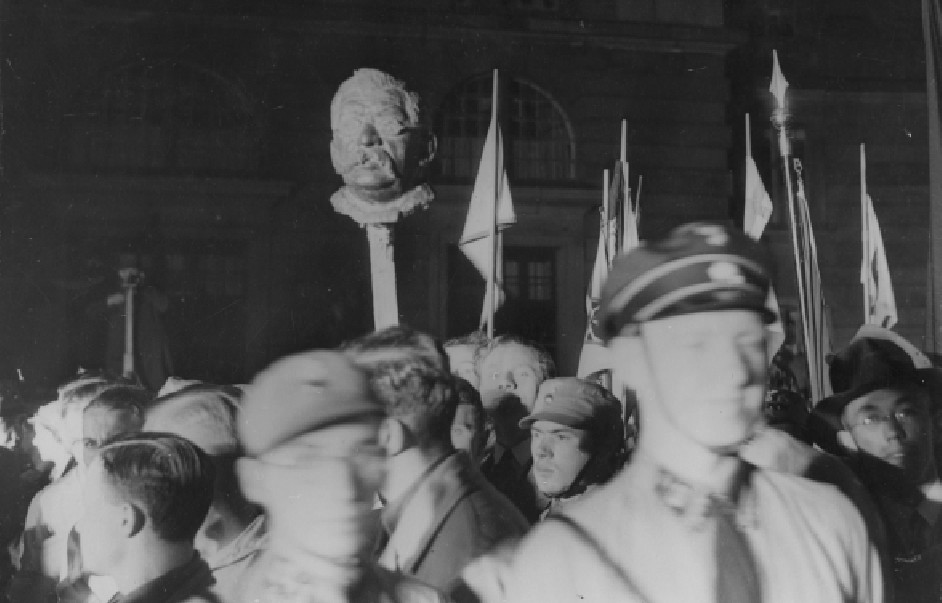
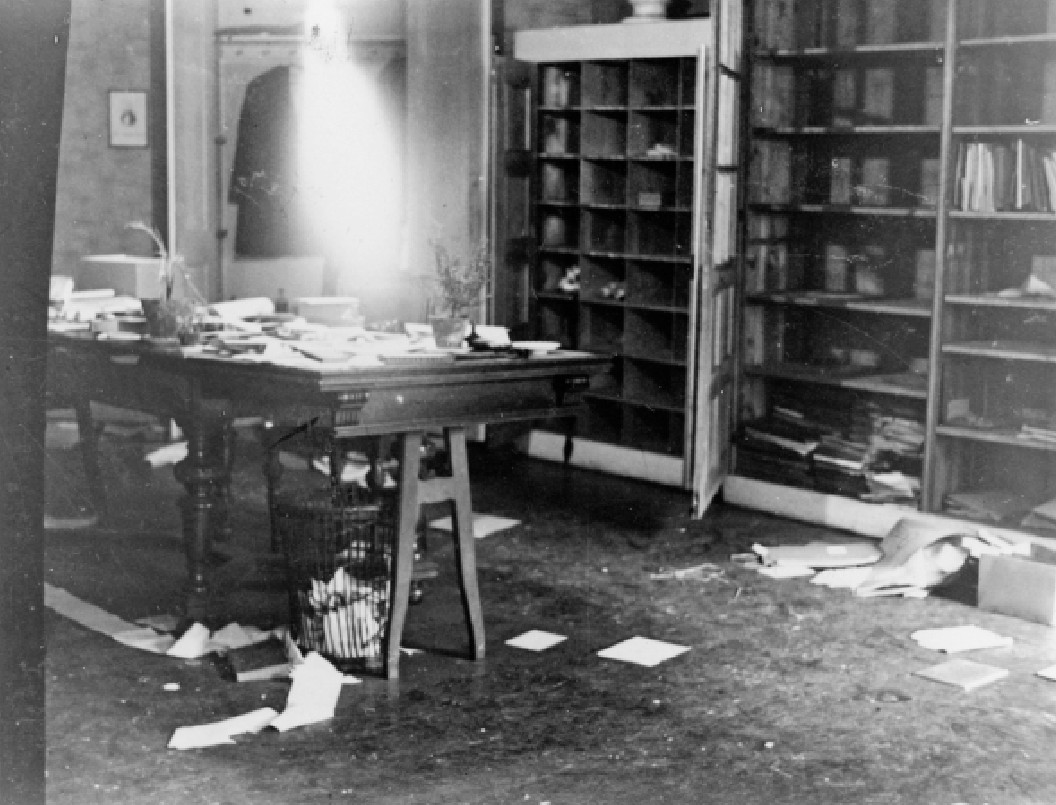
Prelude to total collapse of the Institute’s mission was its coincident deaths. Richard Linsert died in 1933 from pneumonia; Magnus Hirschfeld died in 1935 of a heart attack in France while on an international tour which became his exile. Lili Elvenes died in 1931 from infections brought on by an ambiguous third surgery, likely complicated by an intersex condition.73 A myth established by her own biography claims this surgery was a uterus transplant for purpose of bearing children.74 The realism of her death, protruding in sharp relief against these popular fantasies of her immaculate transition, draws a portrait of transsexuality as quixotic to the point of self-harm, an alarming departure from the Institute’s theme of suicide prevention.
Then, of course, there were the suicides. With psychopathic irony suicide returned not merely for trans patients, but their doctors. Institute therapist Felix Abraham killed himself in Florence in 1938, fearing death under the Italian fascists. Magnus’s younger lover, Karl Giese, also killed himself in 1938, fearing Nazi encroachment on the Sudetenland. Old Institute therapist Arthur Kronfeld, with his wife in Moscow, killed himself in 1941 on fear of Nazi conquest. (Those surgeons loosely associated with the Institute who were not gay or Jewish, Kurt Warnekros and Erwin Gohrbandt, lived on collaborating with the Nazi regime’s forced sterilization program.)
“Every suicide is a reproach against society,” Magnus Hirschfeld wrote. “The doctor must regard every patient suicide as a lack of ability. That is how I, at least, have always felt.”75 To follow Magnus’s feeling is to critique this return of self-elected death as a lack of ability, a kind of social malpractice for which every custodian of the Republic demands indictment. Even the German Communists were unhelpful; their dogma on liberal democrats, that these were “social fascists,” “as bad” as the Nazis, was, as many party Jews pointed out,76 deeply obscurantist in practice. Yet the Republic’s dominant liberalism was a real rat bastard. Its ludicrous reputation for infinite (in actuality, quite finite) social toleration paired against minimal economic support openly fostered revanchist sympathies with its imperial history, while elevating the nation’s newly visible minorities into the position of convenient scapegoat. The Weimar coalition was in this sense partly responsible for its own violent demise; that is to say, the Republic too was suicidal.
Despite the Institute for Sexual Science’s socialist, even communist tendency, whatever tepid liberalism it absorbed through its governing body made it suicidal as well. Its project for so-called “sexual intermediaries,” to make us social creatures, was split between the disciplinary task of reconciling transgender subjects to the State, and the reformist task of reconciling the State to its transgender subjects. By this tactical split it could stand for neither, and neither came to pass. There is no greater reminder of this failed reconciliation with the Weimar Republic than the Nazi state which freely succeeded it, and there is no greater reminder of the failure of the Institute than the label of the small, black, triangular patches that state assigned in its death camps to some of its trans women, but more of its sex workers: “Asocial.”77

□
0 A huge amount of acknowledgements are necessary due to the difficulty of accessing material and the wide range of languages the material covers (German, French, Danish, English). On access: Thank you to Richard Manner and Shelagh Stanton at the University of Sydney for helping me digitize the very rare Steinach Film. Thank you to Maria (@marybabooshka) for providing me with access to Raimund Wolfert’s Charlotte Charlaque. Thank you to Bride (@BrideMarieBaker) for access to the Jorgensen archives at Det Kongelige Bibliothek (a work in progress). Thank you to Abby (@transromano) for providing me with access to reproduction of Das 3 Geschlechts as well as many profitable conversations. Thank you to Tom (@TomCoggins2) for helping me with access to Danish newspaper archives requiring university ID, as well as a few other texts. Thank you to Salty (@SaltyPeppermint) for trying to access several German archives, even if we were not successful in the end. Thank you to Maxi (@weakanalogy) for numerous conversations and citations to a diverse range of texts. Thank you to Mia for handling my constant unclear interlibrary loan requests at NYPL. A quick thank you to Amelia (@NtUrAvrgCistory) for identifying Annie Jones on the Wall of Androgyny. On translation, thank you to Morgan (@d_ohnmacht) for checking my German and Piquante (@Siili_Sk) for checking my French. (Any mistakes are, of course, still my own.) Thank you to those I specifically cannot name; you know who you are. A bibliography for general readers is provided below:
English: Very few writings of substance exist on this material in English, and much of it is inaccessible. Firstly, while not directly related to transgender life at all, Peter Gay’s Weimar Culture is an unbelievably good essay whose conclusions (particularly chpts. 2 & 6) have profoundly influenced this writing. Now, an acceptable casual read is Robert Beachy’s Gay Berlin. As ever I invite readers to peruse relevant sections of Zagria’s Gender Variance Who’s Who, a compilation I find myself constantly returning to; consider starting in on her list of Hirschfeld patients. Though out of print for some time, Charlotte Wolff’s biography Magnus Hirschfeld is highly recommended. Ralf Dose’s more recent short book by the same name is full of information but quite dry. English translated compilations of German scholarship in Not Straight From Germany and Others of My Kind are highly recommended as well, if you can find them. Four scholars producing quality English work somewhat related to this material are Laurie Marhoefer, Katie Sutton, Clayton Whisnant, and Heike Bauer. For primary sources, consider checking out the Lili Elbe Digital Archive and The Weimar Project. Additionally, older English translations of many of Magnus Hirschfeld’s works (but very far from a majority) are available on archive.org.
German: Rainer Herrn is clearly the premier scholar in this field and his Schnittmuster des Geschlechts is the staple work. His Der Liebe und dem Leid repeats much of this content but contains much new as well. I would also suggest many of his essays. Jens Dobler is another premier scholar and his Von anderen Ufern in particular is a benchmark which has strongly influenced this essay. Raimund Wolfert’s very fine and brief book Charlotte Charlaque was full of novel research. And of course I must commend the work of Magnus-Hirschfeld-Gesellschaft, one of the few groups out there striving (against all odds in light of German copyright law and archival restrictions) to provide clear, accessible, original work on trans life in the Weimar period to a wide audience. Otherwise I have depended on primary sources, which are practically beyond counting.
1“Das Institut für Sexualwissenschaften in Berlin” by Karl Birnbaum in Zeitschrift für Sexualwissenschaft Band VI (1919): “Es wäre unbillig, an die Anstalt, die die erste und einzige in ihrer Art in Deutschland ist…”; but more generally in William J. Robinson’s “The Institute of Sexual Science: The Only Institute of its Kind in the World” (1925), Appendix 1 in Magnus Hirschfeld: The Origins of the Gay Liberation Movement by Ralf Dose, trans. Edward H. Willis (2014). Also Pierre Najac’s “L‘Institut de la Science Sexuelle à Berlin” in Vénus et Mercure (1931): “Institut unique au monde.”
2From the English version of Ludwig Levy-Lenz’s memoirs: “My first aesthetic operations, curiously enough, were genital operations… I had a great deal of material on which to experiment – for I cannot call my first operations of this kind by any other name.” The German version I had available to me is slightly different in meaning: “Ich hatte ein umfangreiches Material, an dem ich meine ersten — nicht immer schön geratenen — Versuche in kosmetischer Chirurgie anstellen konnte.” This English difference was made known to me Jill Smith’s lecture “Ludwig Levy-Lenz in Cairo,” at Dartmouth in 2013.
3[Note: This footnote belongs to a piece of supplemental media.] These alteration proposals are located at Landesarchiv Berlin, Rep.202 Acc.1559 Nr.2161.
4[Note: This footnote belongs to a piece of supplemental media.] This quote is Ludwig Levy-Lenz recalling the Institute layout in his autobiography Diskretes und Indiskretes, Band 2 (1953), pg. 137.
5It was not Berlin but Vienna which Alex Ross claims “in 1903… considered suicide as an art” in his book The Rest is Noise (2007), a commentary which I have cribbed shamelessly.
6A surprising amount scholarly energy has been dedicated to answering the Nazi claim sexology is “the Jewish science.” As example I would cite in particular Christina von Braun’s “Is Sexology a Jewish science?” in Der Sexualreformer Magnus Hirschfeld: ein Leben im Spannungsfeld von Wissenschaft, Politik und Gesellschaft (2004). Magnus and Arthur’s Jewish heritage is well-known; Richard’s was made known to me by his descendant’s genealogical work online.
7The featured quotation is from The Transvestites (trans. Lombardi-Nash, 2004), pg. 201. Magnus there also cites Der urnische Mensch (1903), pg. 150-58. Here are but a few more examples of his suicide prevention rhetoric: Sappho und Sokrates (1893), pgs. 3, 26; Paul Näcke’s Ein Besuch bei den Homosexuellen in Berlin (1904), pg. 177 (Rosa Winkel reprint, 1991); Hirschfeld’s interview for Voilà magazine (1933), quoted next paragraph; etc.
8See “Suicide and Crisis in Weimar Berlin” by Moritz Föllmer in Central European History Vol. 42, Nr. 2. for a helpful rundown on the Weimar suicide epidemic as rhetoric and reality. There is therefore a deep connection between Magnus’s anti-war pacifism and his sexological program of suicide prevention. On a heavily psychoanalytic read, I see this as also linked to his sexuality (an affinity for, in modern parlance, twinks); remembering Magnus first wished to be a poet, we repeat Peter Gay’s commentary on Stefan George in Weimar Culture (1968): “George feared and loathed the war precisely because it was killing off his young men.”
9That technology of transgender vaginoplasty existed years before its occurrence may remind us of Thomas Kuhn’s famous writing on gestalt shift in The Structure of Scientific Revolutions (1962). Such an instance as sexology, a German soft science founded immediately following the November Revolution, illustrates for me the central weakness of Thomas’s theory of science, which is that scientific revolutions and political revolutions are the same thing.
10This employee was Ludwig Levy-Lenz in his biography Diskretes und Indiskretes, Band 2 (1953), pg. 209. Contrast against Louis-Charles Royer’s L’Amour en Allemagne (1930), pg. 119 which calls Magnus Hirschfeld “un disciple de Sigmund Freud.” This is quite wrong, and speaks to the excess of Freud’s popularity.
11This quote is from Magnus Hirschfeld’s interview “L’Amour et la Science” with the French newspaper Voilà : l'hebdomadaire du reportage, 1 Juillet 1933. There is also an earlier, less helpful report on the Institute from 9 Avril 1932.
12We may argue this constitutes the first transgender vaginoplasty. Richard Mühsam’s language is quite sensitive on this (“scheidenartige Bildung,” vagina-type formation). I discount it, as vaginoplasty was not intended. See his report “Chirurgische Eingriffe bei Anomalien des Sexuallebens” in Die Therapie der Gegenwort (1926), pg. 453. All quotes about this surgery are taken from this report.
13As highlighted in the essay “Of Rats and Men” by Rainer Herrn and Christine N. Brinckmann, found translated from German in the essay collection Not Straight from Germany (2017), reference to “steinaching” is made in the original German of Alfred Döblin’s novel Berlin Alexanderplatz (1929), a line most difficult to translate today.
14[Note: This footnote belongs to a piece of supplemental media.] Der Steinach-Film is of course a German film, which I was unable to access. (German archives have proven most restrictive.) The version I have digitized and provided clips of is the rare but apparently abridged English translation, which I believe was produced at request of Harry Benjamin and shown to various U.S. American sexological organizations in 1923.
15This quote is again from Voilà : l'hebdomadaire du reportage, 1 Juillet 1933.
16The critical tradition around Girlkultur is almost entirely derogatory and male-dominated. This tradition includes Siegfried Kracauer, Max Horkheimer, and Theodore Adorno, and remains quite insidiously in contemporary academic writing, as with Günter Berghaus’s essay “Girlkultur” in Journal of Design History (1988). Suffice to say Günter’s conclusion Girlkultur was a reactionary force is complicated by its violent rejection within National Socialism; his identification of alternate female role imagery which was often fascist (e.g. nudist clubs) as uncomplicatedly communist is absurd. The female truth of the matter is much closer to Manuela Thurner’s Yale thesis Girlkultur and Kulturfeminismus (1999): “Others, especially German women, found themselves caught in these debates in ways that did not allow for simple binarisms.”
17Ludwig Levy-Lenz again. Diskretes und Indiskretes, Band 2 (1953), pg. 204.
18For clarity I am referring to clinical transgender vaginoplasty, or the post-natal construction of a vagina from a penis on a human body with absolute uterus factor infertility. Practically these procedures have a great deal in common with earlier vaginoplasties. Mentally they have nothing in common; they were done under distinct regimes of medical thought and political power.
19These particular questions are from Pierre Najac’s essay “L’Institut de la Science Sexuelle à Berlin” in Vénus et Mercure (1931) by Janine Merlet, cited as asked of incoming patients. Other details of the passage come from Magnus Hirschfeld’s “Autobiographical Sketch” in Encyclopaedia Sexualis (1936), ed. Victor Robinson.
20This quote may be found in Margaret Sanger: An Autobiography (1938), in chapter 22, “Do Ye Hear the Children Singing?”
21This quote is from Magnus’s essay “Psychische Milieutherapie” in Die Medizinische Welt (1927). It is also provided in the website article on adapatation therapy from the Magnus Hirschfeld society, linked above.
22Transvestitenlokal
23A quote from Willibald is provided on pg. 65 of the Jahrbuch für sexuelle Zwischenstufen, Jg. V Band I (1903): “My voice has never noticeably turned or transitioned. I was able to sing soprano at the age of 23 and can still do so today (30 years).” The rest of this account is provided by Emil Szittya as quoted by Jens Dobler in Von anderen Ufern (2003), pg. 47: “Many years ago, a friend took me to the then-renowned Cafe Mikado. At the piano sat Sir Baron Sadler-Grün, but he had himself called The Baroness. He played the compositions of Count Eulenberg.” These compositions surely were the Rosenlieder.
24Die Tanten, literally “the aunties.” Modern gay German vernacular now uses the alteration “Tunte,” avoiding confusion; however, “auntie” also came over to gay English patois, used for instance in John Rechy’s City of Night (1963), e.g. pg. 196: “An old auntie – a prissy old man.”
25Maskenball, specifically Puppenball, Urningsball, etc
26From Jens Dobler’s Von anderen Ufern (2003), pg. 50.
27This suicide note has been lost but a small part was quoted by the Berliner Börsenzeitung according to the beginning of Jens Dobler’s biography of Voo Doo, You Have Never Seen a Dancer Like Voo Doo (2022), pg. 10. All details of this paragraph come from Jens’s very fine if scattershot biography.
28Given Voo Doo’s performances as Salammbô it is worth recalling Edward Said’s commentary on Flaubert’s work in Orientalism (1978): “The Orient is watched, since its almost (but never quite) offensive behavior issues out of a reservoir of infinite peculiarity; the European, whose sensibility tours the Orient, is a watcher, never involved, always detached… The Orient becomes a living tableau of queerness.” The queer European is, at least, involved.
29This patron was Ruth Margarete Roellig, recorded in her book Berlins Lesbische Frauen (1928). I have used the French translation.
30Bubikopf, a trendy androgynous haircut among progressive Berlinese women at the time. Notably French the translation refers to this as “sa tête bouclée de garçonnet” – “Garçonne” being both a Weimar lesbian magazine, and a gender identity of the period somewhat similar to “boi” today; see Petra Schlierkamp’s essay “Die Garconne” in Eldorado: Homosexuelle Frauen und Männern in Berlin 1850-1950 (1984), pg. 169-79.
31This quote is actually from Paul Näcke’s Ein Besuch bei den Homosexuellen in Berlin (1904), pg. 174 (Rosa Winkel reprint, 1991). However, Magnus clearly agrees based on his earlier commentary beginning on pg. 74. His estimation of 90 to 100 bars come from a piece I had no access to, as quoted in “Alltag im Kaiserreich und der Weimarer Republik” by Wolfgang Theis & Andreas Sternweiler from the collection Eldorado (1984), pg. 63.
32Tischdame
33That boyfriend was Botho von Gamp; see Jens Dobler, Von anderen Ufern (2003), pg. 142.
34Charlotte Wolff mentions meeting Walter Benjamin and his wife at Eldorado in her biography Magnus Hirschfeld (1986), pg. 443. Walter makes a quick reference to Magnus with his high friend in On Hashish (1972, written 1927-34). He reviews a book Magnus contributed to, Das erotische Weltbild (1929), in his Gesammelte Schriften III, pg. 202, which he calls “ein glücklicher Gedanke.” Attestations Benjamin also spent time housed at the Institute can be found in Ralf Dose’s biography Magnus Hirschfeld (2014), which I trust. I am unaware of the primary source.
35This is an easy quote from Isherwood’s third-person biography Christopher and his Kind (1976). All quotes attributed to Isherwood will come from this autobiography.
36For reference see fn. 1 in “Magnus Hirschfeld als Arzt” by Ralf Dose, Mitteilungen der Magnus-Hirschfeld-Gesellschaft Nr. 13, Mai 1989: “The diary entry of Paul Kirsches on September 20, 1930: ‘Over lunch today, Carl [sic] Giese confessed that Magnus was homosexual… Giese resides in the Imperial [Institute] also, is his friend, and depends entirely on him.’”
37Hirschfeld compares his milieutherapie for patients to the treatment of a Sanatorium in his article “Psychische Milieutherapie.” Lothar Goldmann’s “Über das Wesen des Umkleidungstriebes” for Geschlecht und Gesellschaft, v. XII refers to a patient sent to a Heilanstalt “wandering about aimlessly in women’s clothing.” Case 12 of Hirschfeld’s Transvestites discusses adoring the Sanatorium she lived in for 14 days because she could dress as a woman. Raimund Wolfert states Toni Ebel was sent to a Heilanstalt before transition in Charlotte Charlaque (2021), pg. 61.
38On Bolshevik influence see the excellent chapter 11 “The Soviet Influence” from Charlotte Wolff’s Magnus Hirschfeld (1986).
39See for instance the issue Die “Tante” of Der Eigene, Jg. X Nr. 9 (1925), dedicated to anti-Hirschfeld propaganda; this magazine begins the long and false folk tradition of claiming Magnus Hirschfeld was himself a transvestite (often named “Auntie Magnesia”). On Thomas Mann’s queenliness, see the article “Ich protestiere!” in Der Eigene, Jg. X, Nr. 11 (1925).
40This quote is from L’Amour en Allemagne by Louis Charles Royer. I used the 1946 Edition Musy Frères, pg. 123.
41This quote is from Werner Holz’s 1924 thesis held at Humboldt University. On attempting to locate this thesis, they told me it was missing (and I quote, “vermisst”). There is only one copy. So I have instead pulled the quote from Cornelia Klose-Lowerentz’s dissertation Natürliche Körper? (2007), pg. 83, which cites Holz.
42The first publication on clitoral reconstruction for trans women is apparently Brown J., “Creation of a functional clitoris ad aesthetically pleasing introitus in sex conversion” in Transactions of the Sixth International Congress on Plastic and Reconstructive Surgery (Ed. Marchac D., Hueston J.T., 1976), Paris, France: Masson, pgs. 654-5. Thank you to Gaines Blasdel for this citation.
43This quote is from Feliz Abraham’s article “Genitalumwandlungen an zwei männlichen Transvestiten” in Zeitschrift für Sexualwissenschaft und Sexualpolitik (1931). It has been translated into English by The International Journal of Transgenderism in 1997, which is online.
44This quote is from Pierre Najac’s “L‘Institut de la Science Sexuelle à Berlin” in Vénus et Mercure (1931). It is not clear in text whether Dora is necessarily talking about the castration, penectomy, or vaginoplasty, although Pierre assumes the former.
45These quotes are pulled from Najac’s “L‘Institut de la Science Sexuelle à Berlin” in Vénus et Mercure (1931), pg. 181; Isherwood’s Christopher and his Kind (1976); Ludwig Levy-Lenz’s Diskretes und Indiskretes, Band 2 (1953), pg. 204.
46For the naming of “extreme transvestites,” see Magnus Hirschfeld’s Geschlechtskunde v. 1 (1926), pg. 592. For use of the word “transsexual” (technically “transsexualism”) see his article “Die intersexuelle Konstitution” in Jahrbuch für sexuelle Zwischenstufen v. 23 (1923)
47This friend was apparently Harry Benjamin. Raimund Wolfert rightly mentions this meeting story was disputed by Benjamin, who could not even remember Charlotte. But I quite like the story.
48This quote is from Ludwig Levy-Lenz’s Diskretes und Indiskretes, Band 2 (1953), pg. 204. It immediately follows the mastectomy patient mentioned in the previous paragraph. A translation is also provided online at the Magnus Hirschfeld’s Society’s page for Dora Richter, attached by hyperlink.
49This account mostly comes from Ragnar Ahlstedt’s extended article and pamphlet “Man som blivit kvinnor” (1933). I was unable to acquire scans of this, but did see some pictures of the German translation published in Mitteilungen der Magnus-Hirschfeld-Gesellschaft Nr. 67, which claimed only Toni sang. Quotes provided by Raimund Wolfert in Charlotte Charlaque (2021) differ significantly, which I must put down to translation or different sourcing; I lean heavily on Raimund’s account. Charlotte’s poor singing range is mentioned by her in her obituary for Brooklyn Heights Press, February 14 1963.
50This quote as with most of the commentary on Charlotte Charlaque in this essay comes from Raimund Wolfert’s very fine short book Charlotte Charlaque (2021).
51From an interview with Einar Wegener and his wife Gerta in Kobenhavn (1924-03-08). A fine translation is provided by the lovely Lili Elbe Digital archive, which I hyperlink to.
52This quotation comes from Lili Elbe’s pseudoautobiography Man into Woman (1933); pg. 80 in Caughie & Meyer’s scholarly edition (2020).
53Quotes from Chpt. 5 of Paradiset er ikke til salg (1984) by Teit Ritzau, again provided by the supremely useful Lili Elbe Digital archive, which I have linked to.
54As quoted on pgs. 51-2 of Raimund Wolfert’s Charlotte Charlaque (2021), drawing on a conversation between Charlotte and Christine Jorgensen housed in the Christine Jorgensen Archives at Det Kongelige Bibliothek (Utilg. 739).
55Wolfert’s biography Charlotte Charlaque (2021) once more, pg. 55.
56From an interview “An Existence in Two Lives” in Politiken (1931-02-28), provided once again by the wonderful Lili Elbe Digital Archive.
57From the introduction to Magnus Hirschfeld’s Sexual History of the World War (1930).
58From the article “Transvestiten-Ball” in the first issue of Das 3 Geschlecht (Mai 1930); pg. 39 in the collected edition edited by Rainer Herrn (2016). There is also a lovely amateur translation from Erica Kastner online at The Weimar Project, which I have linked to.
59There is a deliberate lack of subtlety in this claim, but subtlety should perhaps be extended to the case studies in question, if not Magnus’s curation of them (e.g. his absurd claim “At the most, one could designate Case 15, Mrs. P, as bisexual” vs. Case 4: “I would willingly offer my mouth to suck my lover if he asked me.”) Cases 9, 10 are standout heterosexuals, violently overcompensating male crossdressers, while Case 12 literally contains the patient’s force fem erotica, and Case 5 is clearly a force fem erotica presented as fact – but both gynocentric narratives. One can therefore hardly take Magnus’s case studies at face value; these were patients being sly, having a laugh, making a political point, etc. Yet a few cases, like 13 and 15, are utterly remarkable accounts of transgender desire and early passing, devastatingly personal and almost definitely factual.
60From the article “Zum Kampf der Transvestiten” in the first issue of Das 3 Geschlecht (1931); pg. 14, Nr. 4 in the collected edition edited by Rainer Herrn (2016).
61From the article “Soll sich ein Transvestit enimannen lassen?” in Die Freundin 5.22 (27 November 1929), pg. 20.
62From “Der Transvestit” by Käthe Karl (credited as Käte Karl), of the column “Die Welt der Transvestiten” for the magazine Die Freundin, July 31 1929.
63See pg. 112 of Jens Dobler’s Von anderen Ufern (2003) for the full quotation.
64A related anecdote I could not fit fluidly into the narrative: French journalist Royer visited Voo Doo’s bar, The Petite Lion, after he saw a public sex bust of ten cops rounding up “four little guys from fifteen to twenty years.” “The prettiest” had on “only espadrilles, trying to tidy his pants.” In reporting this boy at Voo Doo’s bar, the three hustlers around him remarked, “Pussy [Mietze],” and that “A pussy is less than nothing: a woman.”
65This quotation is from Jens Dobler’s Von anderen Ufern (2003), pg. 50.
66The surrounding quotes and images are all from Pierre Najac’s “L‘Institut de la Science Sexuelle à Berlin” in Vénus et Mercure (1931); this one is pg. 188.
67This quote appears on the very opening page of Richard Linsert’s Unzucht Zwischen Männern (1929); Richard cites “pg. 148 of the ‘Begründung’” as part of the “Allgemeinen Deutschen Strafgesetzbuches.”
68An amazing quote. Unzucht Zwischen Männern (1929), pg. 9.
69Comparatively, USSR autarky hardly experienced the Great Depression as a depression at all. A planned economy has its pitfalls; subordination to the whims of global capital is not one.
70This is the only comment about Dora Richter’s life after the Second World War made by a primary source with any credibility. However, the letter has various clear discrepancies from reality. It is from Charlotte, writing as Baroness Carlotta von Curtius, in ONE magazine, March 1955, 27-8: “As she [Dora Richter] is an excellent cook, she soon became the owner of a small restaurant in the city of her birth.”
71Some other known trans victims killed in the Holocaust not discussed in this essay: Heinrich Bode, Liddy Bacroff, and Rudolf Müller. See “Transvestitismus in der NS-Zeit – Ein Forschungsdesiderat” by Rainer Herrn in Zeitschrift für Sexualforschung (2013). All such cases were related to prostitution and/or sodomy, which transvestism was understood to represent, enhance, and accent.
72From Inga Jungmann’s “En Operation” article in Social-Demokraten for Randers og Omegn (June 7, 1932). Charlotte is itnerviewed under her then-common stage name, Lola Montez.
73I would personally agree with the occasional assessment that Lili Elbe had Klinefelter’s. I have no real basis for this agreement but vibes; I have seen her appearance and believe the claims of internal ovaries in her pseudoautobiography have some small basis from a separate condition. This syndrome would increase her likelihood of clotting soon after surgery, which is likely how she died.
74The myth of uterus transplantation begins with Lili Elbe’s pseudoautobiography Man into Woman (1933); pg. 196 in Caughie & Meyer’s scholarly edition (2020): “Tell me, Professor, do you think that I am now strong enough for another operation, for I want so much to become a mother.” Editors correctly flag that Lili’s surgeons, at least, were under no illusions then a trans woman like Lili could be made pregnable by their science. (Also, Lili was almost 50.) Lili remarks in a letter to Iven Person on July 19 the third surgery is “to effect a natural outlet from the womb.” If this means a uterus implantation, it is a lie. (Lili lied often.) Her myth of uterus implantation has been repeated at length, in sources as prestigious as Encyclopedia Britannica and The Guardian. I will remark, however, that this myth-fantasy of immaculate transition is of epic importance within transgender culture; Lili Elbe’s influence, her impact, is the reduction of our romance for transition to a historical personage.
75This quote is from Geschlechtskunde (1926), Vol. 1, pg. 93.
76Those Marxoids eager to deny responsibility for any Communist blunder will be excited to learn that many of these Jewish dissenters from the dogma of social fascism were Trots; Isaac Deutscher is a most famous example.
77That second label the black triangle was taken to mean, arbeitsscheu, or work-shy, may indicate something to the reader of why I have tended towards the phrase “sex worker” over “prostitute” in this essay.